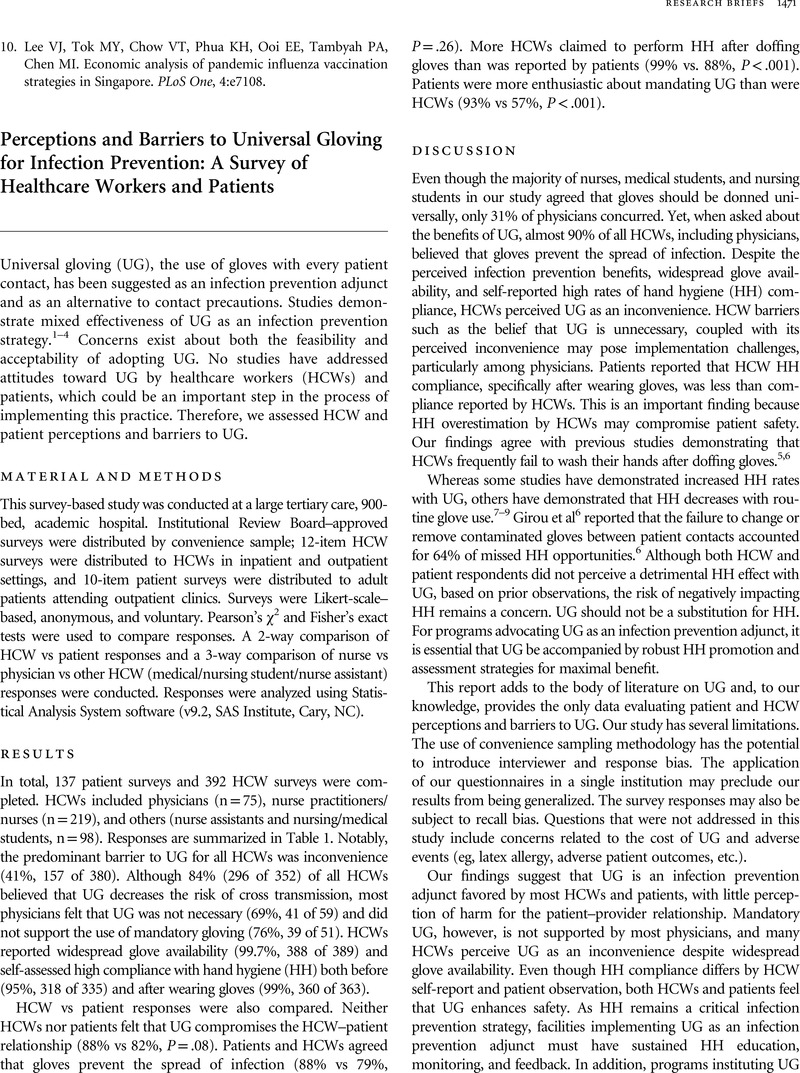Crossref Citations
This article has been cited by the following publications. This list is generated based on data provided by Crossref.
Hess, Olivia C.R.
Srivastava, Meha
Pryor, Rachel
Patrick, Amie
Cooper, Kaila
Godbout, Emily
Anderson, Katie
Doll, Michelle
Stevens, Michael P.
Hemphill, Robin
Edmond, Michael
Wenzel, Richard
and
Bearman, Gonzalo
2020.
The learning hospital: From theory to practice in a hospital infection prevention program.
Infection Control & Hospital Epidemiology,
Vol. 41,
Issue. 1,
p.
86.
Keating, Julie A.
McKinley, Linda
Dolan, Katherine
Moriarty, Helene
Parmasad, Vishala
Ray, Cara
and
Safdar, Nasia
2025.
Veteran patient perceptions of a universal gloving intervention for health care-associated infection prevention: A qualitative study.
American Journal of Infection Control,
Vol. 53,
Issue. 4,
p.
415.



